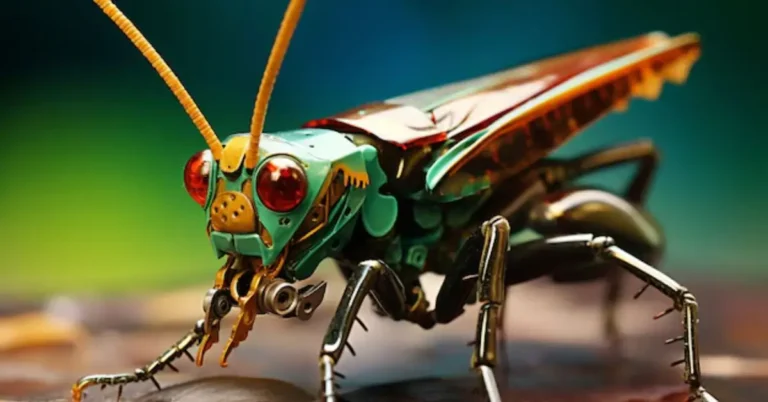Crickets are fascinating creatures, known for their distinctive chirping sounds and their role in various ecosystems as both prey and predator. These insects belong to the family Gryllidae and are found in diverse environments, from forests and grasslands to caves and even urban areas. One of the most intriguing aspects of crickets is their diet, which can vary significantly depending on their species, life stage, and environmental conditions. In this article, we will explore what crickets eat, their dietary preferences, the ecological roles of their feeding habits, and how their diet affects both their health and their role in human economies.
The General Diet of Crickets
Crickets are primarily omnivorous, which means their diet consists of both plant and animal matter. However, their specific food choices can vary widely based on the species. Here is a general overview of what crickets eat:
- Plant Matter: Many crickets consume a variety of plant materials. Their diet often includes leaves, stems, seeds, and fruits. Some crickets are particularly fond of decaying plant matter, which they help decompose as part of the ecosystem’s nutrient recycling process. Grasses are a common food source for many cricket species, and some may also consume flowers and other vegetation.
- Detritus: Detritus, or decomposing organic matter, forms a significant part of many crickets’ diets. This includes rotting leaves, wood, and other plant debris. By feeding on detritus, crickets contribute to the breakdown of organic material, aiding in nutrient cycling and soil formation.
- Insects and Other Arthropods: While crickets are predominantly herbivorous, many species also consume other insects and small arthropods. They may feed on ants, termites, and even other crickets. This carnivorous behavior is particularly evident in certain cricket species that exhibit predatory or scavenging habits.
- Fungi and Algae: Some crickets include fungi and algae in their diet. They may graze on moldy or decomposing plant material where fungi are present. This behavior also helps in the decomposition process and contributes to the nutrient cycling in their habitat.
Dietary Preferences Across Different Cricket Species
Different cricket species have adapted to their specific environments, leading to a wide variety of dietary preferences. Here’s a look at how diet varies among cricket species:
- Field Crickets (Gryllus campestris): Field crickets are known for their voracious appetites. Their diet primarily consists of grass, leaves, and decaying plant matter. They are also known to occasionally consume small insects and other arthropods.
- House Crickets (Acheta domesticus): Commonly found in homes and commercial insect farms, house crickets have a diet that includes grains, fruits, and vegetables. They are often fed a mix of dry grains and vegetables in controlled environments. Their adaptability to various food sources makes them popular for both human consumption and as pet food.
- Tree Crickets (Oecanthus spp.): Tree crickets prefer a diet that includes leaves, twigs, and other plant material. Their diet is closely tied to the types of vegetation available in their arboreal habitats.
- Mole Crickets (Gryllotalpidae family): Mole crickets are burrowing insects that have a diet consisting of underground plant roots, tubers, and occasionally small insects. Their diet reflects their subterranean lifestyle and the type of organic matter available in the soil.
The Role of Crickets in Ecosystems
Crickets play a vital role in various ecosystems, and their dietary habits contribute significantly to ecological balance. Here’s how their feeding behaviors impact their environments:
- Decomposition and Nutrient Cycling: By feeding on decaying plant matter and detritus, crickets contribute to the decomposition process. This helps in breaking down organic material into nutrients that can be absorbed by plants, thus promoting soil health and fertility.
- Food Web Dynamics: Crickets serve as prey for a variety of predators, including birds, reptiles, and mammals. Their role as a food source helps support the food web, maintaining balance in their ecosystems.
- Plant Health: In some cases, crickets can impact plant health by feeding on crops and garden plants. While this can sometimes lead to agricultural challenges, crickets also help in controlling pest populations by consuming other insects.
Crickets as a Food Source for Humans
In recent years, there has been a growing interest in crickets as a sustainable food source for humans. This interest is driven by the environmental benefits and nutritional value of crickets. Here’s an overview of why crickets are being considered as a viable food option:
- Nutritional Value: Crickets are highly nutritious, providing a good source of protein, vitamins, and minerals. They are rich in essential amino acids, making them a valuable protein source. Additionally, crickets contain beneficial fats, including omega-3 and omega-6 fatty acids.
- Sustainability: Crickets have a lower environmental footprint compared to traditional livestock. They require less water, feed, and land, and they produce fewer greenhouse gases. This makes them an eco-friendly alternative to more resource-intensive sources of animal protein.
- Culinary Uses: Crickets can be used in various culinary applications, from protein bars and snacks to gourmet dishes. Their mild flavor and crunchy texture make them a versatile ingredient in many recipes.
- Economic Benefits: The cricket farming industry has the potential to provide economic opportunities, particularly in regions where traditional livestock farming is less feasible. Cricket farming requires less infrastructure and can be integrated into smaller-scale agricultural systems.
The Challenges and Considerations of Cricket Farming
While the benefits of cricket farming are clear, there are also challenges and considerations that need to be addressed:
- Ethical and Cultural Factors: In some cultures, the idea of consuming insects may be met with resistance. Educating consumers about the benefits and sustainability of crickets is crucial for broader acceptance.
- Regulations and Standards: Cricket farming must adhere to regulations and standards to ensure food safety and quality. This includes managing breeding conditions, feed quality, and processing practices.
- Farming Practices: Efficient cricket farming requires knowledge of optimal conditions for growth and reproduction. This includes managing temperature, humidity, and space to ensure healthy and productive cricket populations.
Conclusion
Crickets are remarkable insects with diverse dietary habits that reflect their adaptability and ecological roles. From their contributions to nutrient cycling and food web dynamics to their potential as a sustainable food source for humans, crickets offer a wealth of benefits and insights. Understanding what crickets eat not only enhances our knowledge of these fascinating creatures but also highlights the broader implications of their feeding behaviors for ecosystems and human economies.
As interest in sustainable food sources continues to grow, crickets represent an innovative and environmentally friendly option. By addressing the challenges and embracing the opportunities associated with cricket farming, we can explore new avenues for sustainability and nutrition in our rapidly changing world.

